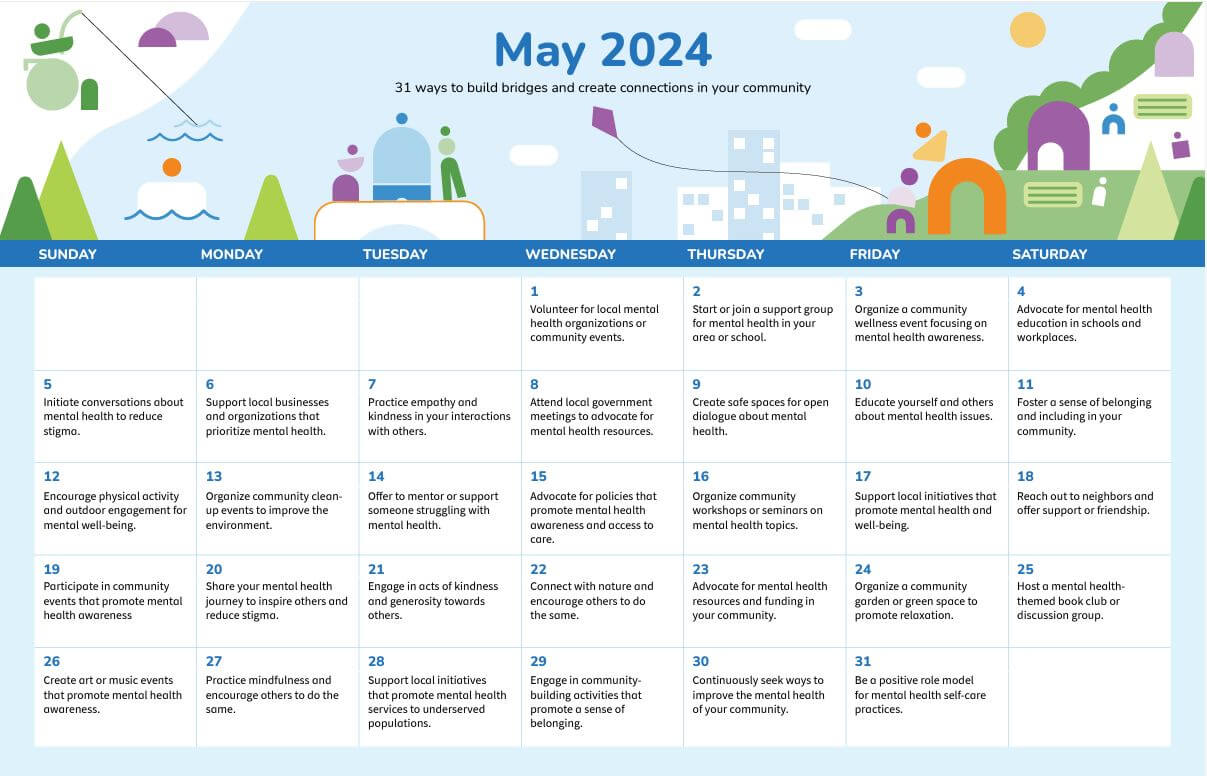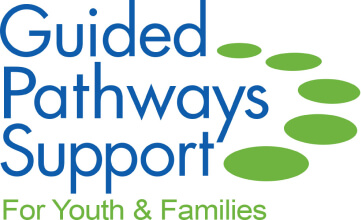Celebrating Mental Health Awareness Month
Webinars
Healing from within: somatic practices for your mind and body
To best care for your mental health, you need a variety of tools to help you cope. This session will explore one tool for healing – somatic practices. Somatic techniques are being used to help cultivate a body-mind connection, regulate emotions, and release stress, tension, and trauma. We will discuss how simple yet powerful exercises impact mental health and how you can explore this kind of healing.
Wired Differently: neurodivergence in the digital age
24/7 information and stimulation can be overwhelming and hard on mental health for anyone. For neurodivergent individuals, living in 2024 poses its challenges, benefits, and opportunities. During this webinar, you will hear from neurodivergent individuals about their experiences, how they have overcome challenges, found support for their mental health, and navigate a world of technology.
From algorithms to empathy: exploring AI’s innovations and challenges
Artificial intelligence (AI) is reshaping the landscape for mental health providers and giving them insights to potentially enhance patient care. In this session, we will dive into how AI influences help-seeking behaviors, facilitates access to support and resources, and poses ethical considerations, risks, and complex challenges for mental health.
BE SEEN IN GREEN CHALLENGE
MAY 1-MAY 31ST, 2024

WEAR GREEN AND SUPPORT MENTAL HEALTH AWARENESS!
Did you know that 1 in 5 Americans will experience a diagnosable mental health condition this year? By joining the “Be Seen in Green” challenge during Mental Health Month this May, you’re not just wearing a color, you’re shining a light of hope and support on mental health for millions. Aiming to educate Americans about mental health and mental health conditions, Mental Health Month was
started in 1949 by Mental Health America. Over the years, we’ve engaged millions in our mission through media, events, resources, and screenings. This tradition continues with a vibrant display of solidarity: wearing green to symbolize our collective commitment to mental well-being.
Why wear green?
As the official color for mental health awareness, green represents renewal, hope, and vitality. Wearing green, whether it’s a complete outfit, a simple green awareness bracelet, or lighting up your building, symbolizes unwavering support for mental health. Participating in this challenge sends a powerful message: Mental health is important, and by joining together, we are advocating for and supporting mental health.
Our objective
This year, we aim to have 300 individuals to take on this challenge and raise vital dollars for Mental Health America. Mental Health America relies on these funds to advance its mission through education, direct services, research, policy, and advocacy. By participating, you’ll help fuel our vision of a world in which all people and communities have equitable opportunities for mental well-being and are able to flourish and live with purpose and meaning. Every dollar raised helps to ensure that our work never stops and that our resources remain accessible to everyone, everywhere.
JOIN THE “BE SEEN IN GREEN” CHALLENGE
No matter where you do it, whether virtually or in person, with your friends, classmates, colleagues, or on your own, you will love the “Be Seen in Green” challenge and enjoy earning special GPS prizes. Here’s how to participate:
- Sign up: Register to participate in the “Be Seen in Green” challenge. You can join as an individual or create a team with friends, family, or colleagues.
- Pick a date: While we encourage participation on May 16, 2024 (Mental Health Action Day), feel free to host your event on any day in May that suits you.
- Set your goal/plan your fundraising: Every dollar counts. Whether it’s running a 5K, organizing a bake sale, or wearing green, set a personal or team fundraising goal. Our suggested fundraising goal is $100 per individual.
- Spread the word: Use our fundraising and Mental Health Month toolkit resources to share your participation and reach out to friends, family, and coworkers via social media, email, and more.
- Celebrate your achievement: Complete the challenge, earn your prize, and join us for a virtual celebration, sharing the impact of your efforts!
FIVE FUNDRAISER IDEAS TO GET YOU STARTED
Run, walk, or bike in green: Grab your running shoes and ask for donations to support your efforts. Ask your friends, family, and colleagues to support your efforts by donating to your fundraising page.
Green gratitude grams: Offer to send personalized notes or digital message of gratitude, encouragement, or humor in exchange for donations.
Dress up in green: Create a green outfit or wear an awareness ribbon all month long! Whether it’s dyeing your hair green for reaching a fundraising milestone or hosting a “Best Dressed” competition, creativity is your ally. Ask your family and friends to donate to your “Be Seen In Green” campaign.
Bake/cook it green: Host a green-themed bake sale and ask for contributions for your mental health awareness creations.
Plan to go live in green on Facebook or other platforms: Do you have a special talent or expertise? Get creative and incorporate green into your stream. You can do things like paint your nails green and teach manicure tips, while encouraging donations to your fundraising page.
Key Messages
GENERAL:
- Mental Health America is proud to have founded in 1949 what is now known as Mental Health Month. Every May, we come together with millions of Americans to continue the tradition of promoting awareness, offering vital resources and education, and advocating for the mental health and well-being of everyone.
- Being able to maintain good mental health is essential to each and every individual’s overall health and well-being. Mental health conditions are common, manageable, and treatable.
- One in 5 people will experience a mental health condition in any given year, and everyone faces challenges in life that can impact their mental health.
- About half of Americans will meet the criteria for a diagnosable mental health condition sometime in their lives, with symptoms starting by age 14 for the majority of people.
- It is never too soon to seek treatment for your mental health. Getting help early saves lives.
- Mental Health America Screening provides a free, anonymous, quick, and easy way to determine whether a person is experiencing symptoms of a mental health condition. Take a mental health test at mhascreening.org.
- This May, through new resources, we will help you:
- Learn how modern life affects mental health with new tools to navigate our changing world.
- Act by building your coping toolbox so you can manage stress, difficult emotions, and challenging situations.
ADVOCATE:
- “Advocacy” doesn’t always mean talking to a government official or local leader. There are things everyone can do to improve the way mental health conditions are perceived and treated.
- Storytelling is a powerful way to break down stigma and promote open conversations about mental health.
- It can be intimidating, but everyone has the power to drive policy change. Contact your elected officials and urge them to support legislation that increases funding for mental health services, expands access to treatment, and protects the rights of people with mental health conditions.
- Integrating mental health care into primary care, and providing mental health programs in schools, workplaces, and communities can improve the well-being of everyone.
- In an election year, it’s especially important to understand where candidates stand on mental health issues. Mental Health America has resources that can help, and we urge everyone to vote with mental health in mind.
2024:
- This year’s theme for Mental Health Month is Where to Start: Mental Health in a Changing World.
- The world is constantly changing – for better or for worse – and it can be overwhelming to deal with everything going on around you.
- We know relationships and the pressures of work and school can impact your mental well-being, but it can be less obvious when the world around you is the root cause of issues. Politics, climate change, the economy, and other factors that can feel out of your control play a role in a person’s
mindset. - While society is getting more comfortable discussing mental health, it can still be hard to know “Where to Start” when it comes to taking care of your own well-being.
LEARN:
- To fully understand how the world around us affects mental health, it is important to know what factors are at play – some of which an individual can change, such as screen time, and others that may be outside of their control, like access to basic resources or current events.
- Loneliness, current events, technology, and social drivers are having an impact on the mental well-being of Americans, but there are protective measures that can prevent mental health conditions from developing or keep symptoms from becoming worse or severe.
ACT:
- There are many ways to take action – big and small – to improve mental health and increase resiliency, regardless of the situations you are dealing with.
- Knowing when to turn to friends, family, and coworkers when you are struggling with life’s challenges can help improve your mental health. MHA’s 2024 Mental Health Month toolkit has tools for starting these important conversations.
- Change is hard, but it’s unavoidable in life. It’s important to find coping skills that can help you process these changes, prioritize your mental well-being, and accept the situations in life that we can’t control.
- Life can be challenging, but every day shouldn’t feel hard or out of your control. If it does, there is help. One free, anonymous, quick, and easy way to determine whether you are experiencing symptoms of a mental health condition is to take a mental health test at mhascreening.org.
- After you take a mental health screen, you will be given resources and tips to try on your own, ways you can connect with others or find a provider, and learn about treatments.
- Your screening results can be used to start a conversation with your primary care provider or a trusted friend or family member.
- A mental health test is a great way to begin planning a course of action for addressing your mental health.
- Seeking professional help for your mental health when self-help efforts aren’t working is a sign of strength, not weakness. You don’t have to go through these struggles alone.
THINGS YOU CAN SAY WHEN YOU’RE NOT “FINE”
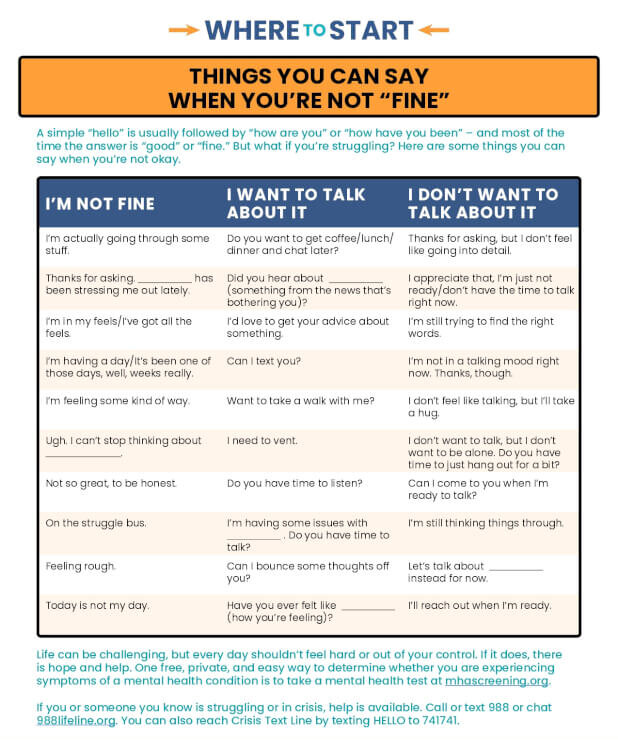
WORD BANK
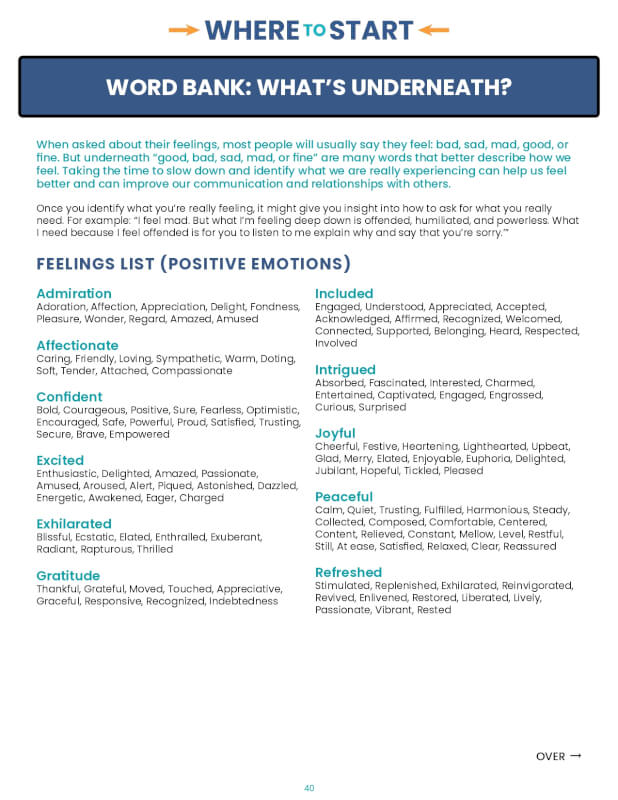
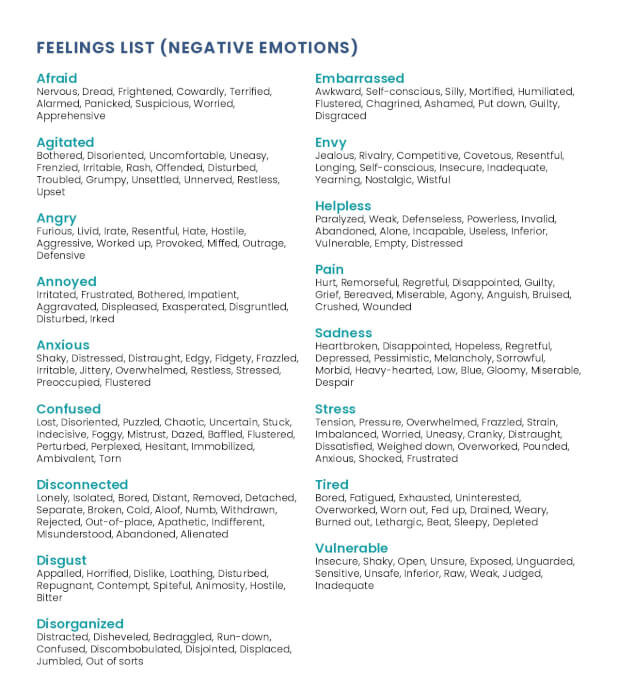
WORD BANK

Coloring Book
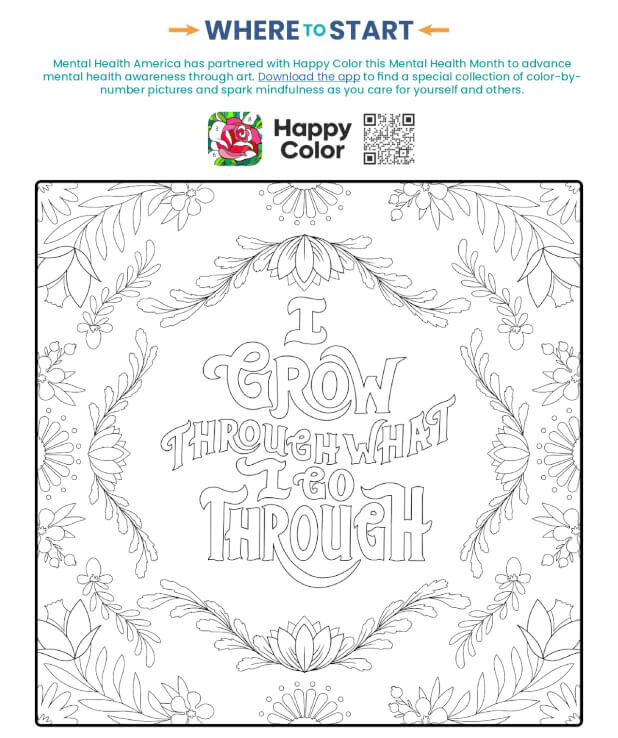
May Calender
